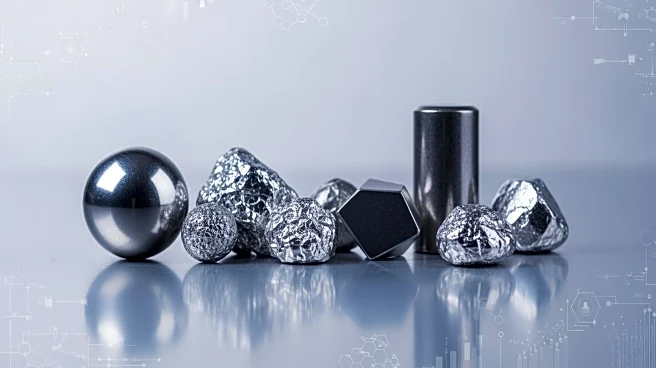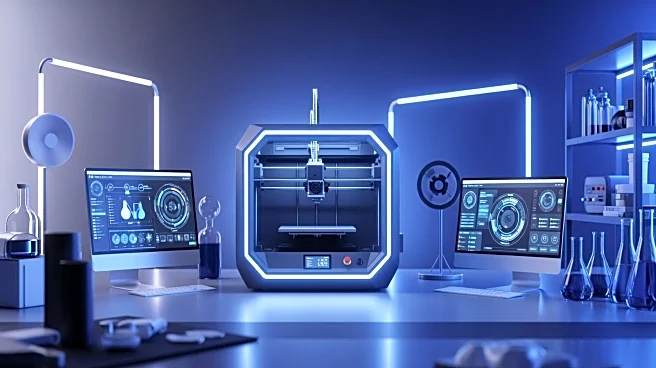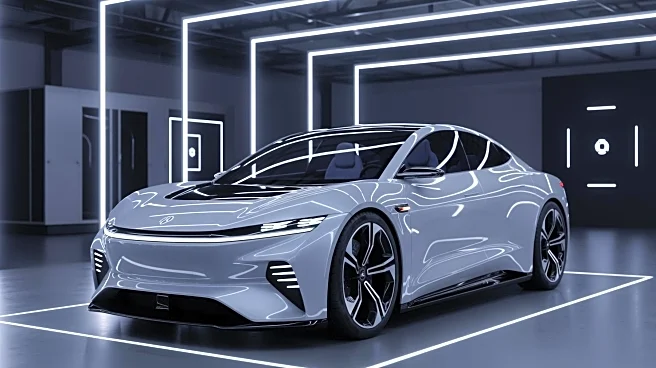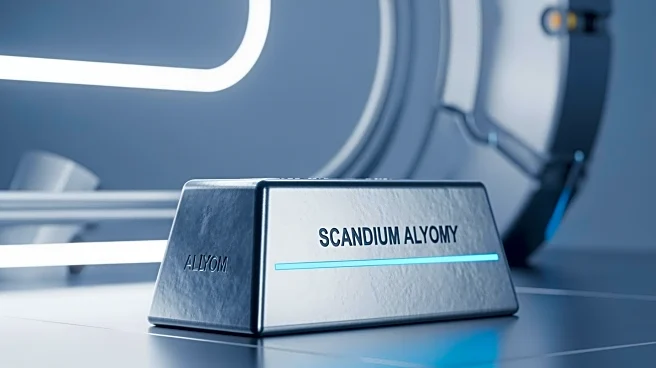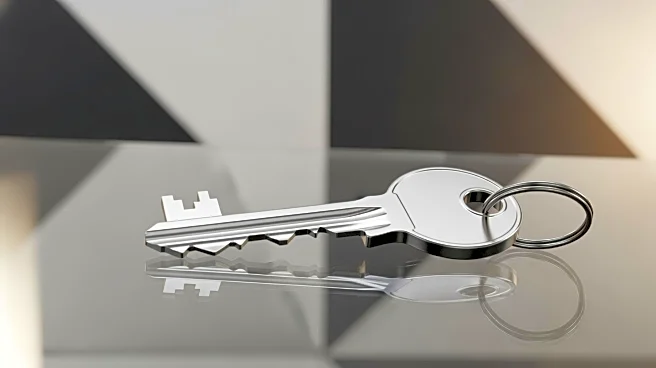What's Happening?
Applied Materials has made significant strides in the field of high-entropy alloys (HEAs) through the development of a nanolamellar high-entropy alloy with improved strength-ductility synergy. The research
focuses on the microstructure design of eutectic high-entropy alloys, particularly the Al19Co20Fe20Ni41 alloy, which is produced using laser powder bed fusion (L-PBF). This alloy exhibits a unique microstructure consisting of alternating face-centered cubic (FCC) and body-centered cubic (BCC) lamellae, contributing to its exceptional mechanical properties. The study highlights the role of valence electron concentration (VEC) in predicting phase constituents and stability, with higher VEC values favoring ductile FCC phases and lower values promoting stronger BCC phases. The research aims to balance strength and ductility by optimizing the L-PBF process parameters, resulting in a high yield strength of 1311 MPa and a uniform elongation of 20%.
Why It's Important?
The advancements in high-entropy alloy research by Applied Materials have significant implications for various industries, particularly those requiring materials with high strength and ductility. The ability to produce alloys with enhanced mechanical properties can lead to more durable and efficient components in sectors such as aerospace, automotive, and manufacturing. The research also underscores the potential of additive manufacturing techniques like L-PBF in creating complex geometries and tailored microstructures, which can reduce production costs and improve material performance. Stakeholders in these industries stand to benefit from the increased reliability and longevity of components made from these advanced materials.
What's Next?
Future research and development efforts may focus on further optimizing the L-PBF process to enhance the mechanical properties of high-entropy alloys. Applied Materials and other stakeholders might explore the application of these alloys in real-world scenarios, potentially leading to collaborations with industries that require high-performance materials. Additionally, there may be an interest in expanding the range of compositions and microstructures to tailor alloys for specific applications, driving innovation in material science and engineering.
Beyond the Headlines
The development of high-entropy alloys with improved strength-ductility synergy could have broader implications for sustainability and resource efficiency. By enabling the production of more durable materials, industries can reduce waste and energy consumption associated with frequent replacements and repairs. Furthermore, the research highlights the importance of interdisciplinary collaboration in advancing material science, combining insights from physics, chemistry, and engineering to achieve breakthroughs in alloy design.
